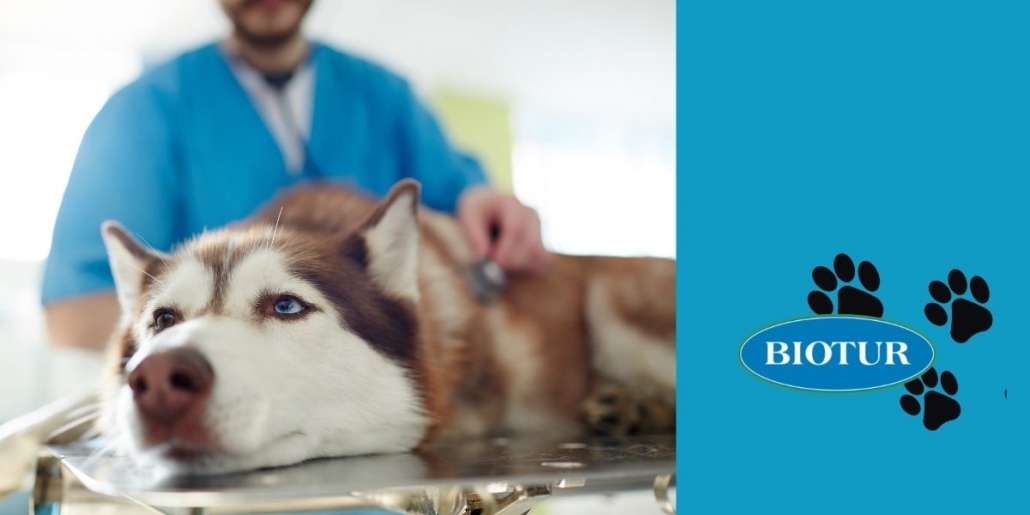
Superficial pyoderma in dogs – Symptoms. Diagnostic. Treatment
Superficial pyoderma in dogs is a common skin disease in recent years in these animals. Pyodermatitis is bacterial, caused by a microorganism belonging to the normal bacterial flora of the dog’s skin. This bacterium lives in the skin of healthy dogs. These organisms can occur due to trauma, scratching or infection with parasites, due to hormonal factors, irritants or allergies.
Superficial pyoderma usually occurs in dogs, especially in the German Shepherd dog breed, but other breeds are also prone to this infection. In cats, this disease occurs very rarely, when the animal is bitten or has certain wounds that become infected.
Symptoms of superficial pyoderma in dogs
The symptoms of superficial pyoderma in dogs are evident on the animal’s skin. There are red spots like blisters or bubbles with yellow contents similar to pus blisters. Also, dandruff, crusts or lesions of round shapes of different sizes with dandruff on the edges are signs that should not be neglected. See your veterinarian if you notice depigmentation around the eyelids, lips, anus and nose. The animal’s skin will begin to take on a dark shade and the hair will fall out.
When the skin’s surface has been damaged, the skin has been wounded due to persistent exposure to moisture, the normal skin bacteria have been altered or modified, the blood supply to the skin has been impeded, or the immune system has been inhibited, bacterial skin infection occurs.
Pyoderma occurs in the abrasions on the skin’s surface that occur as a consequence of scratching and is typically a sequel to allergic dermatitis. Puppy pyoderma is commonly found in sparsely hairy regions of puppies, such as the groin and underarms.
You need to pay attention to all the changes in the skin. At the first symptoms observed, the dog should be taken to a veterinarian, to make a correct diagnosis and to prescribe appropriate treatment.
This skin disease can be of two types:
Both types are caused by certain parasitic, hormonal, infectious diseases, unhygienic conditions, intestinal worms, certain traumas or poor nutrition.
Diagnosis of superficial pyoderma in dogs
For a correct diagnosis of superficial pyoderma in dogs, the dog owner should consult a veterinarian. At the first symptoms, the quadruped should be consulted by the veterinarian, so that the disease is treated in time, so as not to worsen. The veterinarian will perform a cytological examination of the skin (tested on acetate tape and friction tests) or a bacteriological antibiogram to determine the type of bacteria that caused the disease and the level of sensitivity of the skin. In this way, it will be possible to establish a correct diagnosis for your quadruped.
Also, if pyoderma has been caused by other primary diseases or allergies, your veterinarian will determine what these are in order to prescribe appropriate treatment. Through a cytological examination and the detection of fungal cultures, the doctor will diagnose the causes that led to the appearance of infections.
Superficial pyoderma treatment in dogs
Your veterinarian will recommend treatment for superficial pyoderma in dogs. Biotur provides Isaderm gel 5 mg for the local treatment of superficial pyoderma in dogs, such as acute wet dermatitis (“natural outbreaks”) and erythema dermatitis (skin fold dermatitis).
COMPOSITION:
1 g gel contains:
Active substances:
Fusidic acid 5 mg
Betamethasone (as valerate) 1 mg.
Excipients:
Methyl parahydroxybenzoate (E218)
Propyl parahydroxybenzoate.
White translucent gel.
INDICATIONS:
For the local treatment of superficial pyoderma in dogs, such as acute wet dermatitis (“natural outbreaks”) and erythema dermatitis (skin fold dermatitis).
ADMINISTRATION METHOD:
Cutaneous administration.
The hairs covering the lesions must first be carefully cut. The affected area should then be cleaned with an antiseptic solution before daily application of the gel. The amount applied should cover the affected area with a thin layer. Apply about 0.5 cm long gel for 8 cm2 of lesion, twice a day, for at least 5 days. Treatment should be continued for 48 hours after the lesion has healed. The treatment period should not exceed 7 days. If the response to treatment does not occur within three days or the condition deteriorates, the diagnosis should be re-evaluated.
Your dog deserves all the attention and you don’t have to neglect his health. Treat the disease early so as not to reach other complications that can endanger the pet’s life.


